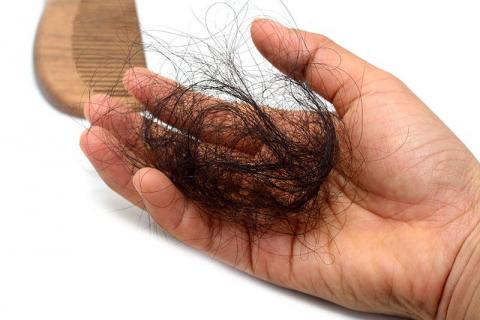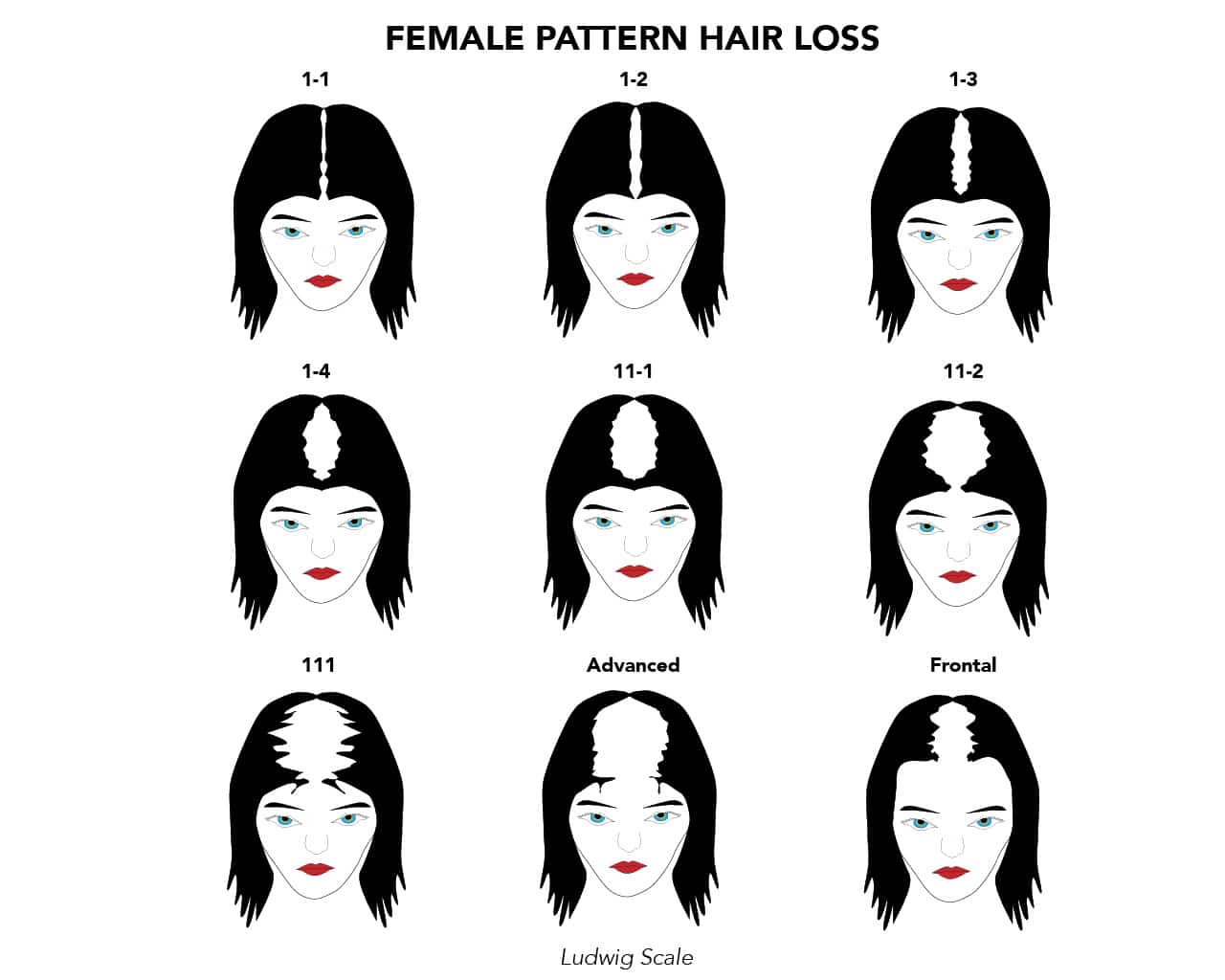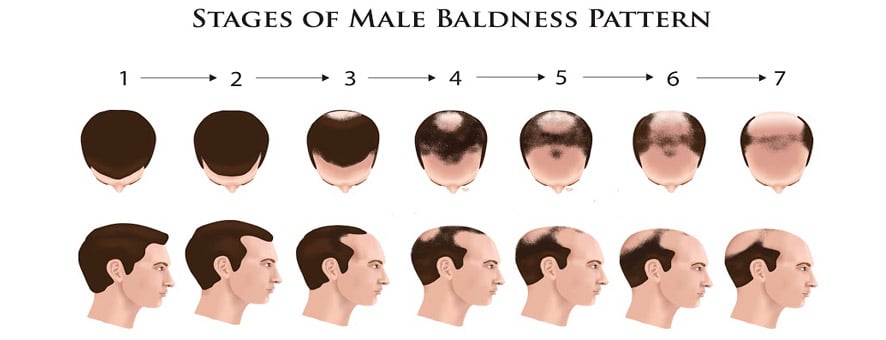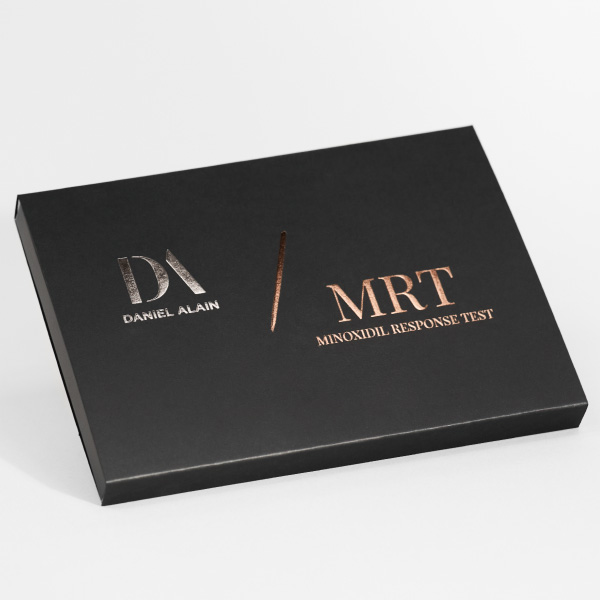How Do I Know If My Hair Loss is Genetic?

As we get older, some degree of hair loss is inevitable. Just as the leaves will fall from the trees when the weather starts to cool, so will some hair fall out. In fact, it’s pretty normal to lose between 50 and 100 strands of hair a day as part of the natural hair growth cycle. But sometimes, there’s something else at play when it comes to your hair falling out.
Perhaps it’s stress, a change in weather, or a new medication. Or, it could be your genes. Approximately 50% of women’s hair loss and 98% of men’s hair loss is genetic, medically referred to as Androgenetic Alopecia. The good news is if you find out your hair loss is caused by genetics there are FDA-approved treatment options to help hold onto your hair. How can you know androgenetic alopecia is the cause of your hair loss?
At Daniel Alain, we understand how stressful hair loss can be. When you struggle to find an answer to your questions, you may be frustrated or start to feel overwhelmed. In this article, we’re going to take you through a few key ways to assess whether you may have androgenetic alopecia. By the end of this article, you’ll have a good idea of what to look for and how you can get definitive answers to your questions.
What is Androgenetic Alopecia?
Androgenetic alopecia, also known as female (or male) pattern hair loss, is a genetic condition that causes hair loss and is thought to be caused by an excess in androgen activity. Minoxidil, also known by the brand name Rogaine®, is a popular FDA-approved treatment for this condition. It is approved as a topical treatment at 2% concentration for women and 5% concentration for men.
Because Minoxidil is the only topical FDA-approved treatment to treat androgenetic alopecia, you want to make sure it will work for you. After all, Minoxidil can take 6-9 months to see results. That’s only if you have a sufficient amount of the SULT1A1 enzyme to activate Minoxidil into its active form AND androgenetic alopecia. So, how you can you tell if you have androgenetic alopecia?

What Does Androgenetic Alopecia Look Like in Women?

Female pattern hair loss is often referred to as a Christmas tree pattern. As seen in the above picture, loss begins primarily at the part and, over time, the hair takes on a more diffused look. Most women don’t completely lose their hair but will note how thin it gets overall and how their part has widened over time. In women, androgenetic alopecia does not often result in a receding hairline.
While female pattern baldness is a genetic condition, many women only notice their hair loss after menopause which may imply that some hormonal changes can play a role.
What Does Androgenetic Alopecia Look Like in Men?

Male pattern baldness can begin as early as the late teens or early 20s for men. Most often, it appears later in life. While androgenetic alopecia in men often develops slowly, it is noticeable due to the receding hairline and overall balding on the crown.
How Do You Know if You Have Androgenetic Alopecia?
Now that you’ve read this article, you know what androgenetic alopecia looks like and what causes it. However, you may not yet be experiencing hair loss and may be curious if you’re at risk for hair loss caused by female (or male) pattern baldness. While you can go see a dermatologist to rule out certain causes, you may not have the time to schedule an appointment. Or perhaps you know you have androgenetic alopecia but want to know if you’ll be in the population of men and women who respond to Minoxidil treatments.
The research and development teams at Daniel Alain developed the Minoxidil Response Test which determines if you’ll respond to Minoxidil treatments based on how much of the SULT1A1 enzyme is present on the scalp.
Before, you often had to wait to lose your hair until you could try to stop it. Even then, it may have been too late. Now, you can get ahead of hair loss and prepare for what may come.
If you feel ready to get answers to your hair loss questions and take control over hair loss, order the Minoxidil Response Test from Daniel Alain. The tests only require a few strands of hair, plucked from your scalp. Once you send these samples into our lab, you can expect answers within 7-14 business days. Don’t wait until it’s too late— order the Minoxidil Response Test to get answers quickly and confidently choose a treatment plan that is right for you.

All product and company names are trademarks ™ or registered marks ® of their respective holders. Use of them does not imply any affiliation with or endorsement by them.



